Transition from Early to Later Schwalm Whitework (2)
The second of my treasures from the transitional period between early and later Schwalm whitework is also no longer in its original condition. It was a parade cushion border but has been changed into a table runner.
The piece is worked on old handwoven linen with a 19/cm thread count. The motif border measures 14 cm X 80 cm. It is bordered on top and on bottom by a 5.5 cm high nine-unit needle-weaving band with a Peahole hem on both sides.
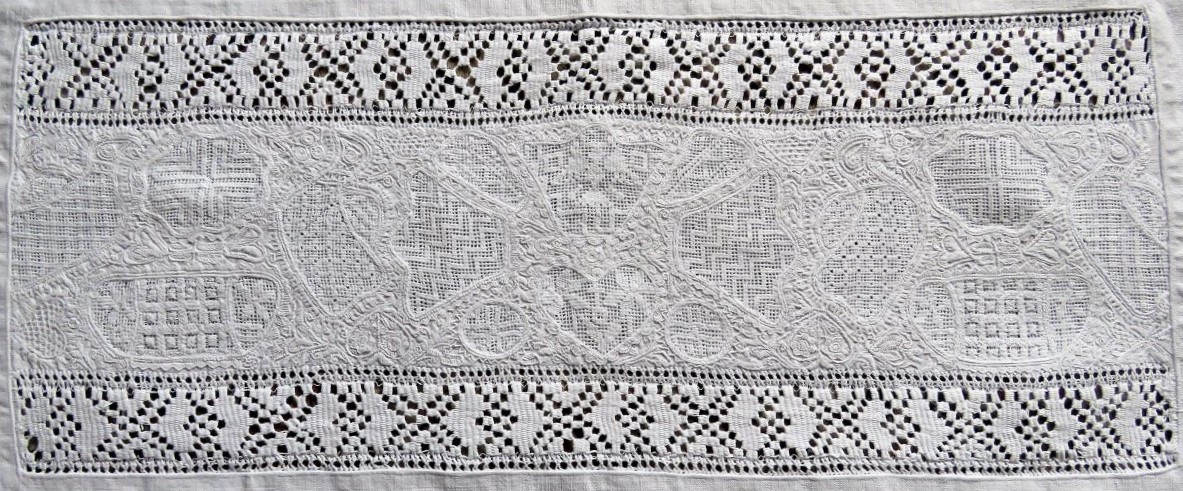
This piece also shows only a slight combination of both styles of Schwalm whitework. In contrast to the border from 1804 this border is very densely embroidered. Every small space is filled with stitches.
All large motifs were filled with openwork patterns, but many of the smaller motifs were filled with patterns without withdrawing threads. (Smaller shapes were common in early Schwalm whitework, whereas larger shapes were preferred in the later style. The larger the shapes, the more difficult it is to fill them with early patterns.)
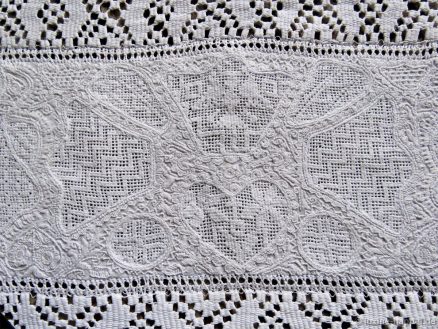
The center shows a design of a heart with three big tulips, two circles, and two shapes adapted in their form to the remaining space. Theses two shapes have Rose stitch patterns; all other shapes have needle-weaving patterns, whereas the two center shapes have figured needle-weaving patterns.
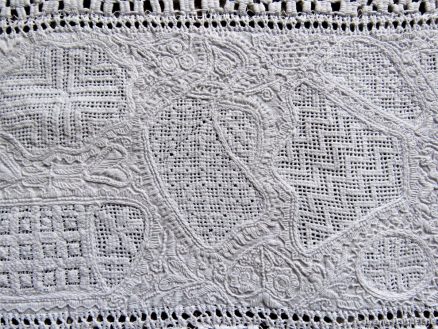
A flower and a flowerpot bordered by big birds can be seen to the left and to the right of the center design. Smaller shapes without thread withdrawing and filled with early patterns are seen interspersed between the larger motifs.
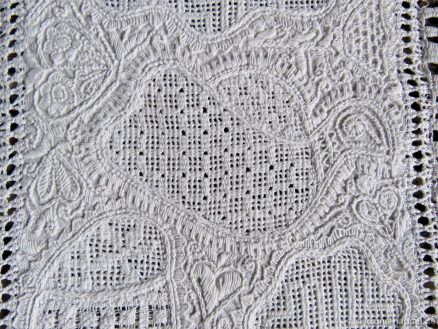
There are hearts filled with leaves,

And there is a small tulip filled with a pattern made with pairs of Blanket stitches.

The same pattern made with pairs of Blanket stitches is found in hearts on the bottom left
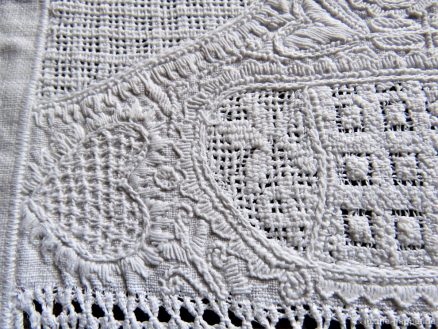
and the bottom right of the border. Whereas there is only one large heart on the left, there are two smaller hearts on the right (unfortunately, a section of the embroidery is hidden by the seam made during repurposing).
As you can see, the design is not really symmetric. Three of the birds have a relatively vertical position while the fourth’s position is nearly horizontal.
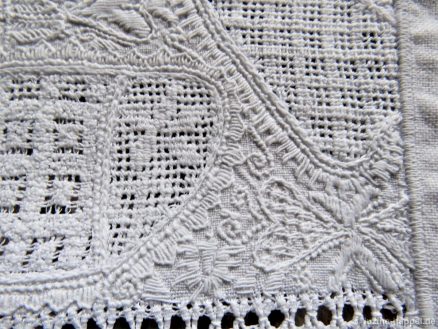
In this example Coral Knot stitches and Chain stitches were worked, but no Stem stitches. Many small tendrils are found. The outlines were embroidered using one or two rows of Chain stitches, and with one row of Coral Knot stitches and an additional row of Chain stitches. Additional outlining was made with 2 short-2 long, Blanket stitch points, half-eyelet scallops, Satin stitch points and interlaced Straight stitches (see Schwalm Curved Lines, Narrow Borders, and Ornamental Stitches).

Interlaced Straight stitches are found not only as outlining, like here around the circle,

but also as decorative stitches, like these on the neck of the bird,
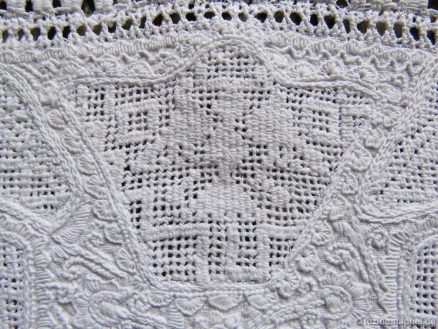
The needle-weaving figures of the different shapes did not turn out well.
A rarely seen openwork Rose stitch pattern was embroidered in the middle part of the flower pot.
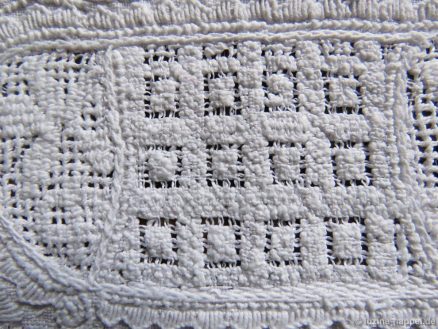
In this example, we see some elements that are typical of early Schwalm whitework: in all there are seventeen small motifs without thread withdrawing. Five of these are filled with patterns made with pairs of Blanket stitches, four with Satin stitches, four with Blanket stitch leaves, two with Blanket stitch eyelets and interlaced Straight stitches, and two with small flowers (and tendrils).

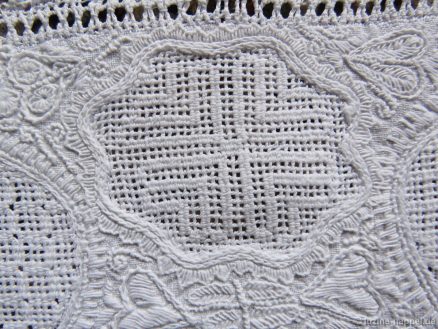
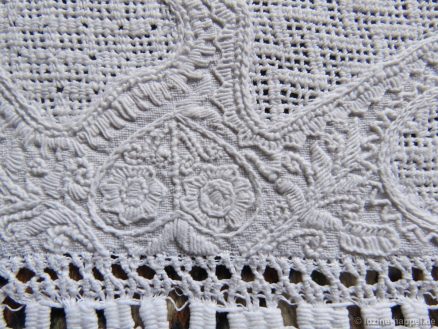



Leave a Reply